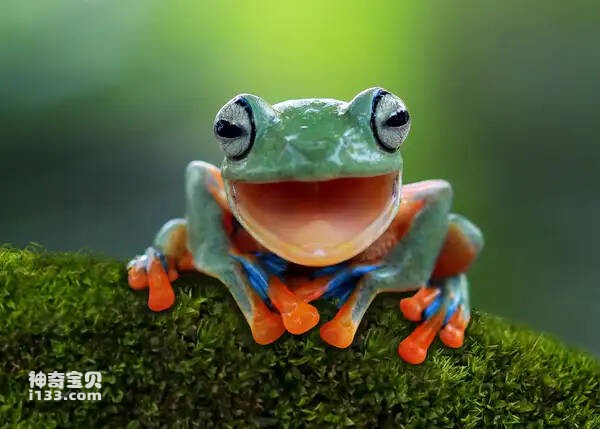You are walking in the woods when a small brown and green creature jumps into your path. Careful not to step on it, you bent down to take a closer look.
Have you spotted a frog or toad?
Although it can be difficult to tell the difference between frogs and toads, there are some characteristics that can help you identify amphibians.

The first is the creature's skin. If the skin is smooth and moist, you're probably looking at a frog. If the ground is dry, rough, and bumpy, you're probably looking at a toad. Although the idea of contracting warts from touching a toad is completely untrue, it may be helpful to keep it in mind. The bumps on a toad's back won't give you skin problems, but they do look like warts, which provides a clue that what you're looking at may be a toad rather than a frog.
Another tip is the location of the animal. Because frogs need to keep their skin moist, they are often found near water. Their breeding often occurs in freshwater as well, and a cluster of eggs floating on the surface of a pond or attached to aquatic plants may indicate the presence of frogs nearby. On the other hand, many species of toads do not need the security provided by a nearby body of water because their skin tends to retain the required moisture better than that of frogs. If there are no ponds, lakes, or streams nearby, you may see a toad.
Finally, you might want to look at the creature's legs. The hind legs of several species of frogs indicate that these animals mostly live in water. They are longer than the head and body, allowing the frog to jump great distances on the ground and swim quickly in the water. In contrast, the hind legs of many species of toads are shorter than the head and body, and the animals appear short and round. Toads use small hops to move themselves, sometimes even appearing to crawl. (There are several species of frogs and toads that actually transport themselves by walking rather than hopping or hopping.)
If you already know these facts but still can't tell the difference between a toad and a frog, there's no need to be embarrassed. There's a reason these two creatures look so similar: Frogs and toads are both tailless amphibians, belonging to the order Anura. That's not all. Frogs and toads are not entirely immutable categories. These labels have no taxonomic basis. Ultimately, all toads actually fall into the frog category. The differences that have long divided anurans into these two groups are mostly superficial.
While the term frog is generally applied to an tailless animal with long hind legs and smooth, mucus-covered skin, many creatures identified as frogs have atypical features that complicate identification. For example, sedge frogs (family Hyperoliidae) are one of the few frog species with sticky toe discs to aid climbing, while flying frogs in the family Treefrog can glide 12 to 15 meters using expanded webs between their toes (40 to 50 feet)) through air.
The same variation exists in the toad category. About 30 different genera of anurans are placed in this category, but they are not "true toads" (only members of the family Bufonidae can claim this honor). An 'unreal' toad even bears can live young - one of very few anurans. In fact, toad is a very unstable adjective, and one member of a family may be called a frog while another is called a toad. For example, there is a species in the Brachycephalidae family (Brachycephalus didactylus), known as the Brazilian golden frog, the Brazilian flea frog, the Brazilian flea toad, and the Izeckson's toad.
So, given all of this, there's really no reliable way to tell a frog from a toad. But more often than not, the three differentiating features we’ve covered will get you closer to your goals. The anurans won't mind if you call a few frogs "toads" in the process.
We created this article in conjunction with AI technology, then made sure it was fact-checked and edited by a Animals Top editor.